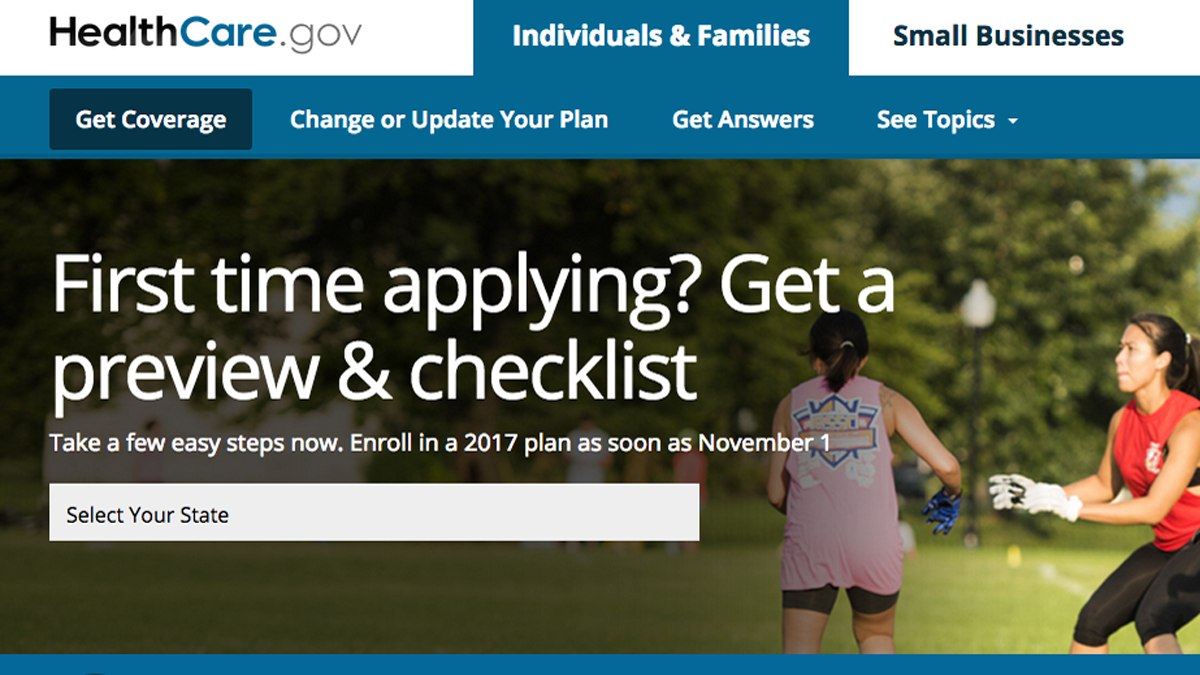Pennsylvanians facing fewer options, higher rates for ACA health plans next year

(Image via healthcare.gov)
Pennsylvania residents shopping for a health plan for next year through the Affordable Care Act’s online marketplace will find fewer options and higher price tags.
That state insurance department has released its approved rates for 2017, with an overall average rate increase of 33 percent. In Southeastern Pennsylvania, about 130,000 residents with an Independence Blue Cross’ Keystone health plan will face a 28 percent rate increase.
Antoinette Kraus, with the Pennsylvania Health Access network consumer group, said the increase, in part, is because these plans are covering people who until recently had no insurance. Everyone underestimated how much care they’d need.
“Folks are getting the treatment they need, and we underestimated how long and how sick this population is,” she said. “So we’re seeing that play out in the rates.”
Those looking for insurance will want to shop around once open enrollment starts in November, said Kraus.
Though she said she worries how the increases will affect people, she stressed that those who earn less than about $47,500 a year will be eligible for tax credits that will help offset the cost increases. What people actully pay will vary depending on factors like the level of coverage and age.
Still, people have limited options in this region.
Two companies, Aetna and UnitedHealthcare, have dropped out of the marketplace, citing ongoing losses. That leaves Independence Blue Cross as the only company offering plans through the marketplace in the Philadelphia area next year.
In their justification for approving the increases, state regulators stated they needed to ensure companies like Blue Cross would stay in the marketplace and that they’d be able to cover those who had plans with Aetna or UnitedHealthcare. Department officials also said they hope the rate increase is a one-time correction to previous underestimates in pricing.
“It was very difficult to make these decisions,” said state insurance commissioner Teresa Miller. “The bottom line is insurers have really struggled to accurately price their plans. Because of that, plans have been underpriced in Pennsylvania, and we have a number of insurers who continue to lose money on plans offered in the exchange.”
Miller also pointed to federal actions that “have undermined” the stability of the market. Her agency recently filed an amicus brief in support of a Highmark Inc. lawsuit over federal government payments that she said should have been issued to insurers who experienced higher than expected claims losses.
In addition, Miller said, insurance companies have been dealing with increased expenses due to people signing up for coverage only when they’re sick and then dropping it.
Based on state insurance data, two Independence Blue Cross products combined collected more in premiums than it paid in claims last year. But factoring in administrative expenses, the company experienced about $20 million in pretax losses.
“Despite the exit of other insurers, Southeastern Pennsylvania can rely on Independence Blue Cross to continue to provide coverage in our community, but at the same time we must ensure a sustainable market. Our rates reflect the changing market trends impacting insurers here and across the country,” stated Brian Lobley, Independence Blue Cross’ head of commercial and consumer markets, in an email.
Open enrollment starts next month. People who want to start or change coverage by Jan. 1, 2017, have until Dec. 15 to make a selection.
Disclosure: Independence Blue Cross supports WHYY.
WHYY is your source for fact-based, in-depth journalism and information. As a nonprofit organization, we rely on financial support from readers like you. Please give today.

